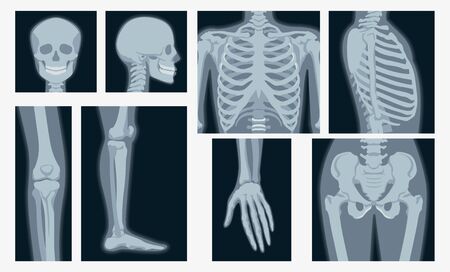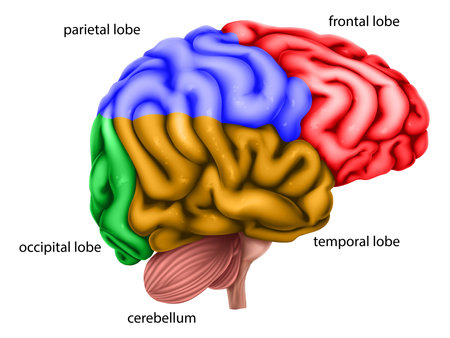Understanding the American Educational System for Children with Disabilities
Overview of Public and Private School Options
In the United States, children with cerebral palsy (CP) have access to both public and private schools. Each type of school has its own approach and resources for supporting students with disabilities. Here’s a quick comparison:
| School Type | Key Features | Support for Students with CP |
|---|---|---|
| Public Schools | Funded by government Must follow federal and state laws No tuition fees |
Required to provide special education services IEP support available Access to therapists and specialists |
| Private Schools | Privately funded May charge tuition Laws may not apply in the same way as public schools |
Varies widely by school Some offer specialized programs, but are not always required to provide IEPs or specific services |
Relevant Laws: The Individuals with Disabilities Education Act (IDEA)
The Individuals with Disabilities Education Act (IDEA) is the most important law protecting students with disabilities in public schools across the U.S. IDEA ensures that eligible children receive a Free Appropriate Public Education (FAPE) tailored to their unique needs, usually through an Individualized Education Program (IEP). This law applies to all public schools, including charter schools.
Main Rights Under IDEA:
- Free Appropriate Public Education (FAPE): Every child is entitled to education at no cost that meets their unique needs.
- Least Restrictive Environment (LRE): Students should be included in general classrooms whenever possible.
- Individualized Education Program (IEP): A customized plan that outlines educational goals and services for each student.
- Parental Involvement: Families have the right to participate in all decisions about their child’s education.
- Due Process: Parents can challenge decisions if they disagree with the schools plan or placement.
The Rights of Students with Cerebral Palsy in U.S. Schools
Students with cerebral palsy have several rights protected by federal laws like IDEA, Section 504 of the Rehabilitation Act, and the Americans with Disabilities Act (ADA). These laws make sure children have equal access to education, necessary accommodations, and support services such as physical therapy, speech therapy, assistive technology, and more. It’s important for parents to know these rights so they can advocate for their child effectively.
2. Getting Started: Evaluation and Identification
Understanding how to begin the process of securing special education services for a student with cerebral palsy in the United States can feel overwhelming. Here’s a step-by-step guide to help you navigate the referral, assessment, and eligibility determination process.
Step 1: Referral for Special Education Evaluation
The journey typically starts when someone—often a teacher, parent, or healthcare provider—notices that a student is struggling to keep up in school due to physical or learning challenges related to cerebral palsy. A formal request, called a referral, is then made to the schools special education team.
Who Can Make a Referral?
| Person/Group | How They Might Notice a Need |
|---|---|
| Parents or Guardians | Observe difficulties at home or with homework |
| Teachers | Notice academic, social, or physical challenges in class |
| Doctors/Therapists | Identify needs during medical or therapy visits |
| School Counselors/Psychologists | See patterns in behavior or performance data |
Step 2: Parental Consent and Notification
Before any evaluation takes place, the school must obtain written consent from the student’s parent or legal guardian. Parents are notified of their rights and given information about the process.
Step 3: Comprehensive Assessment Process
A multidisciplinary team assesses the student’s unique needs. This evaluation is designed to gather detailed information on how cerebral palsy affects learning, mobility, communication, and other areas important for school success.
What Does the Assessment Include?
| Assessment Area | Example Tools/Professionals Involved |
|---|---|
| Cognitive Skills | School psychologist using standardized tests |
| Academic Performance | Special education teacher reviewing classwork and test scores |
| Motor Skills and Mobility | Physical therapist or occupational therapist evaluations |
| Communication Abilities | Speech-language pathologist assessments |
| Social and Emotional Development | Counselor observations and interviews with family and teachers |
Step 4: Determining Eligibility for Special Education Services
The evaluation team reviews all collected information to determine if the student qualifies for special education under the Individuals with Disabilities Education Act (IDEA). Cerebral palsy typically falls under the category of “Orthopedic Impairment” or sometimes “Multiple Disabilities,” depending on individual needs.
Main Criteria Considered:
- The presence of a disability (such as cerebral palsy)
- An educational need that cannot be met without specialized instruction or supports
- The impact of the disability on academic progress and access to general education curriculum
If eligible, the student moves forward in developing an Individualized Education Program (IEP), which outlines personalized goals and supports within the school setting.

3. Developing an Effective IEP: Key Components and Best Practices
Understanding the IEP Process
The Individualized Education Program (IEP) is a legal document in the United States designed to ensure that students with disabilities, including those with cerebral palsy (CP), receive special education and related services tailored to their unique needs. The process begins when a student is identified as needing additional support. The school evaluates the child, and if eligible, an IEP meeting is scheduled to create a plan for the students education.
Required Team Members
The IEP team plays a vital role in developing and implementing a successful plan. By law, the following people must be part of the IEP team:
| Team Member | Role |
|---|---|
| Parent or Guardian | Advocates for the childs needs and shares insights about their strengths and challenges. |
| Special Education Teacher | Coordinates special education services and ensures goals are achievable. |
| General Education Teacher | Shares input on classroom participation and strategies for inclusion. |
| School District Representative | Ensures resources are available and that the plan follows state and federal regulations. |
| Evaluation Specialist | Presents assessment results to help guide goal setting and service decisions. |
| Therapists (e.g., PT/OT/Speech) | Contribute expertise on physical, occupational, or speech needs related to CP. |
| The Student (when appropriate) | Offers personal perspectives about their own goals and preferences. |
Setting Goals for Students with Cerebral Palsy
Goals are the foundation of an effective IEP. For students with cerebral palsy, these should be specific, measurable, achievable, relevant, and time-bound (SMART). Goals might focus on academic progress, mobility, communication skills, daily living skills, or social interaction. It’s important that goals reflect both educational priorities and the student’s individual interests and abilities.
Examples of IEP Goals:
- Academic: Improve reading comprehension by identifying main ideas in grade-level texts with 80% accuracy.
- Physical: Increase independence in moving between classrooms using adaptive equipment.
- Communication: Use a communication device to express needs during classroom activities.
- Social: Participate in group activities with peers at least twice per week.
Accommodations and Modifications for Cerebral Palsy
A key part of an IEP is planning accommodations (changes in how a student learns) and modifications (changes in what a student learns). These ensure students with cerebral palsy have equal access to education. Here are common examples:
| Accommodations | Modifications |
|---|---|
| Extra time on tests and assignments Use of assistive technology (e.g., speech-to-text software) Preferential seating Physical accessibility adjustments Alternative formats for materials (large print, audio books) |
Simplified assignments Alternative grading systems Reduced homework load Substitute tasks that match student’s skill level Adjusted curriculum content for individual needs |
Best Practices for Creating a Successful IEP
- Collaborate as a team: Open communication among all team members is essential.
- Focus on strengths: Build on what the student can do, not just areas of need.
- Involve the family: Parents know their child best—listen to their concerns and suggestions.
- Update regularly: Review progress at least once a year or whenever needs change.
- Create inclusive opportunities: Encourage participation in general education settings whenever possible.
An effective IEP empowers students with cerebral palsy by providing customized support so they can thrive academically and socially within the American school system.
4. Collaboration with School Teams and Advocacy
Building Positive Relationships with School Staff
For students with cerebral palsy, working closely with school teams is essential to ensure the best possible educational experience. Building strong relationships with teachers, therapists, and administrators helps create a supportive environment where your child’s needs are understood and addressed.
Tips for Effective Communication
| Strategy | Description |
|---|---|
| Be Proactive | Reach out to staff at the start of the school year to introduce yourself and share important information about your child’s needs. |
| Use Clear Communication | Be specific about concerns or requests. Use notes, emails, or scheduled meetings to keep everyone updated. |
| Stay Positive | Acknowledge what’s working well and express appreciation for staff efforts. This builds goodwill and encourages teamwork. |
| Document Everything | Keep records of conversations, emails, and meeting notes. This helps track progress and ensures clear understanding among all parties. |
| Ask Questions | If you’re unsure about something, don’t hesitate to ask for clarification. Understanding school processes helps you advocate effectively. |
Working Effectively with the IEP Team
The IEP (Individualized Education Program) team usually includes teachers, therapists, special education coordinators, and sometimes district representatives. As a parent or caregiver, you are an important member of this team. Your insights about your child’s strengths, challenges, and daily routines are invaluable.
- Prepare in Advance: Write down questions or concerns before meetings so you can address them clearly.
- Share Insights: Offer real-life examples of what works at home or in other settings.
- Collaborate on Goals: Work together to set realistic and meaningful goals for your child’s progress.
- Follow Up: After meetings, confirm action items and check in regularly on progress.
Advocacy Strategies Within the School System
Advocating for your child means speaking up for their needs while maintaining a spirit of partnership with school staff. Here are some strategies for effective advocacy:
Know Your Rights
The Individuals with Disabilities Education Act (IDEA) guarantees certain rights for students with disabilities. Familiarize yourself with these protections so you can speak confidently in meetings and request appropriate services.
Stay Involved and Visible
- Attend School Events: Being present shows that you’re engaged and invested in your child’s success.
- Volunteer When Possible: Helping out in class or during activities lets staff see your commitment firsthand.
- Cultivate Relationships: Get to know people beyond formal meetings—it’s easier to resolve issues when trust exists.
Create a Team Mentality
Aim to work “with” rather than “against” school staff. Use phrases like “Let’s work together” or “How can we support each other?” to promote teamwork.
5. Transition Planning and Community Resources
Understanding Transitions for Students with Cerebral Palsy
Transitions are important moments in the educational journey of students with cerebral palsy (CP). These include moving from elementary to middle school, high school to post-secondary education, or transitioning into adulthood and the workforce. Effective transition planning helps students develop skills, build confidence, and connect with helpful resources along the way.
The Role of IEPs in Transition Planning
In the United States, the Individualized Education Program (IEP) must start including a transition plan by age 16, though some states begin earlier. This plan outlines goals and services to support the student’s move towards greater independence. Transition goals may focus on:
- Continuing education (college, trade schools)
- Employment and job training
- Independent living skills
Key Steps in Transition Planning
| Step | Description |
|---|---|
| Assess Needs and Strengths | Identify interests, abilities, and areas where support is needed. |
| Set Goals | Create measurable, age-appropriate objectives for life after high school. |
| Connect with Agencies | Link students and families to adult service providers early on. |
| Teach Self-Advocacy | Encourage students to participate in meetings and voice their needs. |
Community Resources and Supports Available in the U.S.
The U.S. offers a wide range of community supports for individuals with CP and their families. Knowing what’s available can make transitions smoother.
Main Types of Community Resources
| Resource Type | Description/Examples |
|---|---|
| Disability Services Agencies | State Vocational Rehabilitation Services help with job training and placement. |
| Healthcare Providers | Pediatricians, therapists, and specialists who continue care into adulthood. |
| Parent Support Groups | Local chapters of organizations like United Cerebral Palsy offer peer support and information. |
| Recreation Programs | Adaptive sports leagues, camps, or after-school activities designed for youth with disabilities. |
Connecting with Resources: Tips for Families
- Ask your IEP team about local transition fairs or resource nights hosted by schools or community centers.
- Visit websites like Parent Center Hub or United Cerebral Palsy Local Affiliates.
- Contact your state’s Department of Education or Office of Special Education for specific programs in your area.


